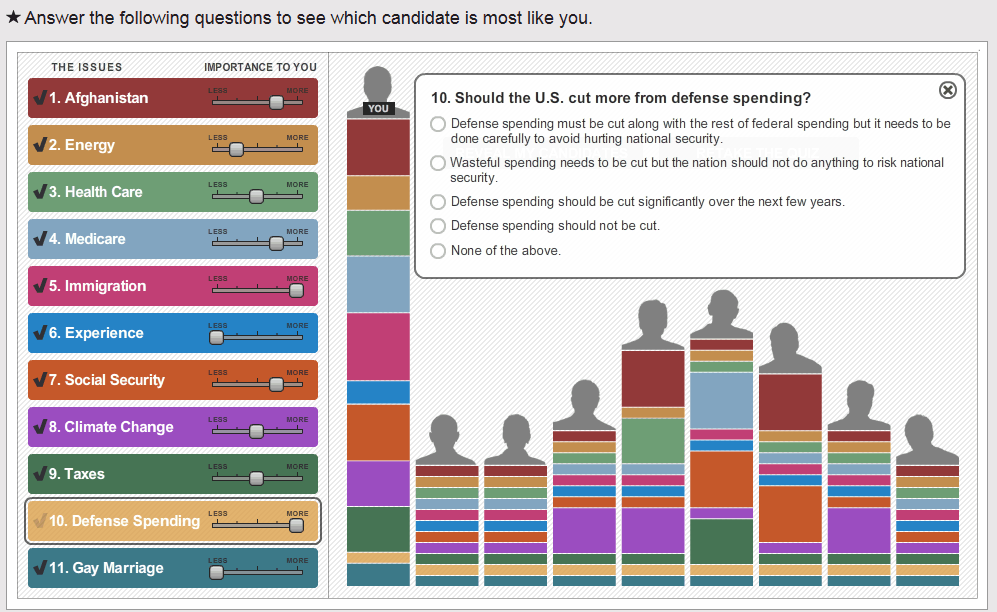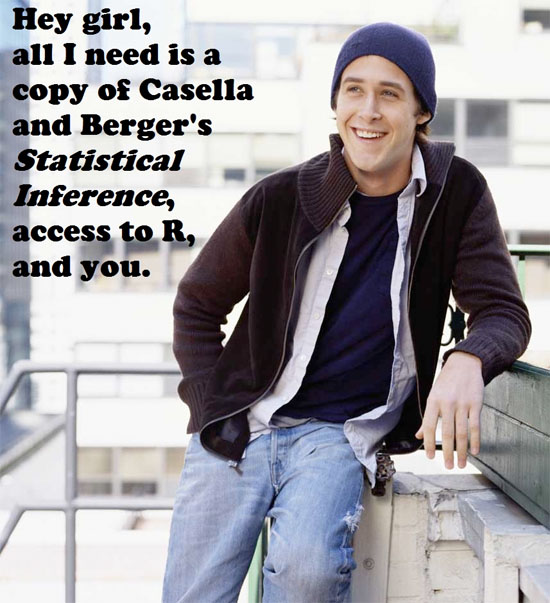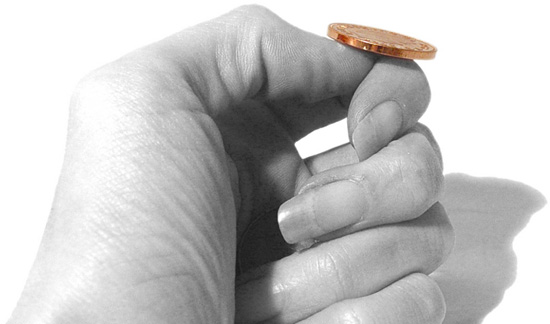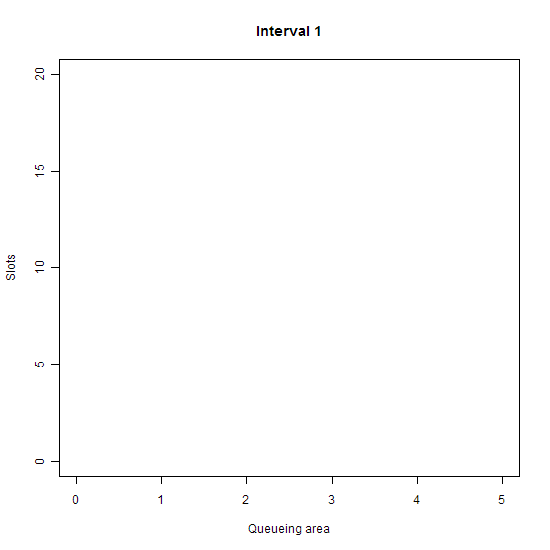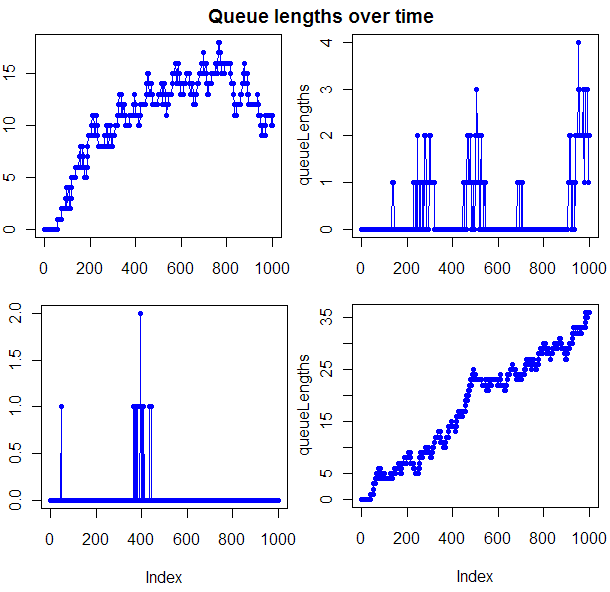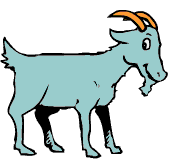
Chances are you’ve already heard about the Monty Hall problem. I wouldn’t be mentioning it at all, except that I keep reading descriptions of the problem that miss the absolutely critical point. For those who are new to the problem, here’s a summary:
Suppose you’re a contestant on a game show. The host, Monty Hall, shows you three numbered doors. Two of these doors hide goats, which you don’t want, and one of them hides a shiny new convertible, which you do. Pick the right door and you go home with the convertible, pick the wrong door and you get the goat (which I suspect they don’t even really give you). You make your best guess and choose a door. But before showing what’s behind it, Mr. Hall opens one of the other two doors to reveal a goat. “Now”, he asks, “do you want to stick with your original choice, or do you want to switch doors to the other one that hasn’t been opened yet?”
While you try desperately to remember the rules for conditional probability, the studio audience yells out suggestions and an attractive model smiles at you, making you wonder if you should ask if she comes with the car, but then you realize she probably gets that question all the time. Time is running out! Should you switch doors?
The correct decision, at least in terms of maximizing your chances of winning the car (but, alas, not the model), is to switch. IQ Test Grand Champion and writer Marilyn Vos Savant famously answered the question in one of her columns. Her answer, that you should switch, was widely controversial. The math behind the solution is surprisingly simple, though it rarely seems be presented in a simple way. Your first guess has a one-in-three chance of being right. That means your first guess has a two-in-three chance of being wrong. If your first guess was wrong, that means the car must be behind one of the other two doors. Since Monty just showed you the goat, the car must be behind the other door. Switch and you will get the car for sure. If you don’t switch, your chance of winning remains one-in-three. If you do switch, it jumps up to two-in-three. So ignore the studio audience and don’t get distracted by the model. Just call out the number of that other door!
But wait! Did you catch the missing assumptions needed to make this solution work? The big one, for me, is that Monty Hall will always follow the same procedure of opening up a door with a goat, regardless of what’s behind the door you picked. If you distrust Monty, you might suspect that he will only show you a goat when you’ve picked the car, in order to entice you to switch and loose the car. In that case you should stick with the door you have. Or perhaps Monty shows the goat more frequently when the car is picked first (but not all the time), in which case switching may or may not be the best strategy.
The part where I yell
The problem here is that the Monty Hall problem MAKES NO SENSE WITHOUT AN EXPLICIT PRIOR on Monty Hall’s behavior. Sorry for the yelling, but the point is too important to miss. In this case, the prior is your belief about the procedure Monty is using, and how strongly you hold that belief to be true. The notion of a “prior” might be difficult to explain to a general audience, but assuming a particular one without stating it directly is poisonous. The Monty Hall problem, like many others, can’t be turned into math without first assuming some kind of probability distribution for the inputs.
Usually, when one the distributions of an input isn’t specified, we tend to assume that every possible option has an equal chance of occurring; in other words that we have a uniform probability distribution. This makes sense for another hidden assumption in the problem — that either the game show contestant has made his first pick randomly, or that the prizes were placed behind doors randomly. Though even here I tend to agree with mathematical historian Byron Wall, who argues that our default assumption of a set of equally likely events is problematic. But in the case of the Monty Hall problem, there’s no uniform to even assume. The set of possible ways that Mr. Hall could decide to act is infinite and unknowable.
How does Hall pick between the goats?
Another hidden assumption is that Monty randomizes which door to reveal if the unpicked doors are both hiding goats. If he didn’t, and you knew for sure that Monty would always pick the door with the lower number if when he had a choice, then the math works out differently. Now, if you pick door number 1 and Monty shows you a goat behind door number 3, you know for sure car must be behind door number 2. Switching guarantees you a win! If you pick door number 1 and Monty opens door number 2, that could mean either a car or a goat is behind door number 3. To calculate your odds of winning by switching, you can use Bayes’ theorem to find the probability that a car is behind door number 3, given that Monty reveled a goat behind door 2.
Work out the math, and you should get one-half. In other words, if Monty shows you door number 2, and if he’s using the rule stated above, then switching doors gives you a one-half probability of winning, as does staying with the door you have. It doesn’t matter. No matter which door Monty reveals, switching your pick is never worse than not switching, and sometimes it’s better to switch. That means it’s what game theorists call a dominant strategy, one you would always want to employ. Even so, since Monty’s door revealing rules can change your odds of winning, this is another hidden assumption that should have been made explicit.
Back when goats were golden
When the Monty Hall problem was originally described to me, I assumed that Monty had chosen a door to reveal at random, and that this door just happened to contain a goat. Perhaps not the most reasonable assumption to make, but at the time I was still young enough to think that winning a goat might be cooler than winning some K-car convertible (hum… maybe I still believe that). At any rate, I didn’t have the skills to work out a solution under my assumptions back then, but doing it now takes just a little bit of work.
The probability that you will win after switching, given that Monty “accidentally” reveals a goat, is actually the sum of two other probabilities. The first probability, that you will win by switching if both of the other doors contain goats, is zero. The second is the probability that only one of the two others doors was hiding a goat, in which case you will win for sure, since we already assumed that Monty revealed a goat. Because we know that Monty picked a goat by accident, we gain no additional information about the door we picked or the alternative we might switch to. Each one is equally likely to have the car, so switch or not, our probability of winning is one-half.
If you find this explanation confusing, you might want to try Jeffrey Rosenthal’s explanation, which shows how to re-normalize probabilities of events within your target condition.
The Man Who Loved Only Bayes
After publishing her solution, Vos Savant was flooded with letters telling her she got it wrong. I suspect that many of those readers were ignorant of her assumptions, though Vos Savant says that most people fully understood the problem, and simply didn’t accept her solution. One of the few accounts to mention the importance of Monty Hall’s procedural rules, even though that part only comes after 8 pages of discussion, is in Paul Hoffman’s “The Man Who Loved Only Numbers”. To explain why so many people, many of them with advanced degrees, got it wrong, Hoffman quotes mathematician Andrew Vázsonyi:
“Physical scientists tend to believe in the idea that probability is attached to things. Take a coin. You know the probability of a head is one-half. Physical scientists seem to have the idea that the probability of one-half is fused with the coin. It’s a property. It’s a physical thing. But say I take that coin and toss it a hundred times and each time it comes up tails. You will say something is wrong. The coin is false. But the coin hasn’t changed. It’s the same coin that it was when I started to toss it. So why did I change my mind? Because my mind has been upgraded with information. This is the Bayesian view of probability. It took me much effort to understand that probability is a state of mind.”
I might view probability more in terms of degrees of (rational) belief, but the Vázsonyi quote highlights a key component missing in much of science: the direct recognition that you have a prior, and that this prior is a form of bias, very often baked right into the model you have chosen. There is no escape from this bias! The frequentest approach to probability is really just a special case within the world of Bayesian inference, where you have picked an uninformative (or minimally informative?) prior. But even here you have to model the prior. You have to know: how are we assuming that Monty Hall makes his decision about showing the contestant a goat? Is it based on some fixed probability regardless of which door the contestant picks? Does Monty consult the entrails of a chicken? As mentioned before, the world of possibilities is infinite, and no progress can be made in terms of our understanding until we delineate a space in which our prior beliefs will live. Only once we’ve done that, implicitly or (preferably!) explicitly, can we test out our beliefs, and update them based Monty Hall’s actions.
